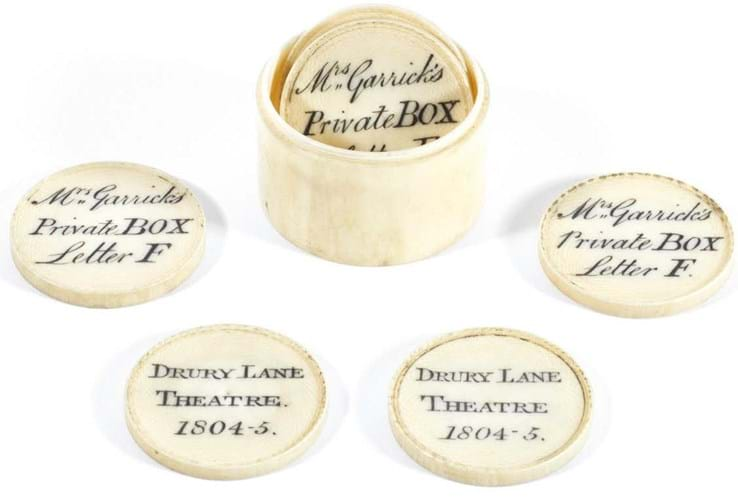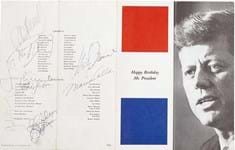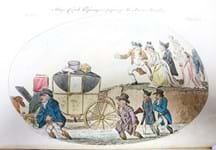
Deriving originally from the estate of Garrick’s widow, it was the fifth and last of such dispersals – previous sales having been held by Sotheby’s (1928, 1950 and 1962) and Phillips (1992).
This final portion included such diverse material as accounts for the payments of musicians at Garrick’s Drury Lane Theatre, a catalogue of his library of quarto editions of various plays and transcripts of his love letters to his soon-to-be wife, Eva Maria Vogel.
Other printed matter, family correspondence and all sorts of ephemera added to the mix – the latter category including a kid leather glove said to have belonged to Shakespeare.
Drury Lane treasurer William Pritchard’s account book for the 1750 season, alluded to above, is an important new source for the study of both theatrical and musical history in Georgian Britain.
It also, noted the cataloguer, marked a significant advance in Garrick’s promotion of his idol, Shakespeare.
“On the opening night, he announced from the stage that henceforth Drury Lane Theatre was to be ‘Sacred to Shakespeare’. That self-same night saw the opening of what soon became known as ‘the War of the Romeos’; this being a 12-night run with both Drury Lane and Covent Garden staging Romeo and Juliet – Garrick’s Romeo facing off Spranger Barry’s at the Garden.”
From a different source came a set of six ivory admission counters to Mrs Garrick’s private box at the Drury Lane Theatre for the 1804-05 season. In the original ivory box, they sold at £3200.
List of ladies

The title-page of the rare 1786 copy of the notorious Harris’s List… of Covent Garden’s ladies of the night that made £16,000. The Harris signature is a stamped one.
London’s Covent Garden district was not known only for its theatrical diversions. In 1760 there appeared the first edition of Harris’s List of Covent- Garden Ladies: or, Man of Pleasure’s Kalendar…, a directory of London prostitutes that was issued almost annually thereafter for 34 years.
Each of the entries, with the ladies’ names thinly disguised, includes an address and a physical description, often accompanied by a note on prices and particular specialities or attributes.
The names of both the author and the publishers were, as one might expect, pseudonymous, though the name Harris would have at the time evoked that of a well-known waiter and pimp at the Shakespear’s Head Tavern.
Whether Harris’s List… was ever viewed as a real guide to London’s prostitutes, or was just an exercise in soft-core pornography, remains a subject for debate, though its notoriety did result in a Court of King’s Bench prosecution.
In 1794 two London booksellers were prosecuted for publishing a new edition of what court records described as this “wicked, nasty, filthy, bawdy, and obscene” book.
Wicked or not, it is certainly rare. Auction records list only two other examples, copies of the 1788 and ‘90 editions, and the 1786 edition seen in the Kightsbridge sale is otherwise known only from a copy now in the Bavarian State Library.
Stab-stitched, un-pressed and un-trimmed in rubbed and soiled but original pale blue wrappers, it sold at £16,000.














